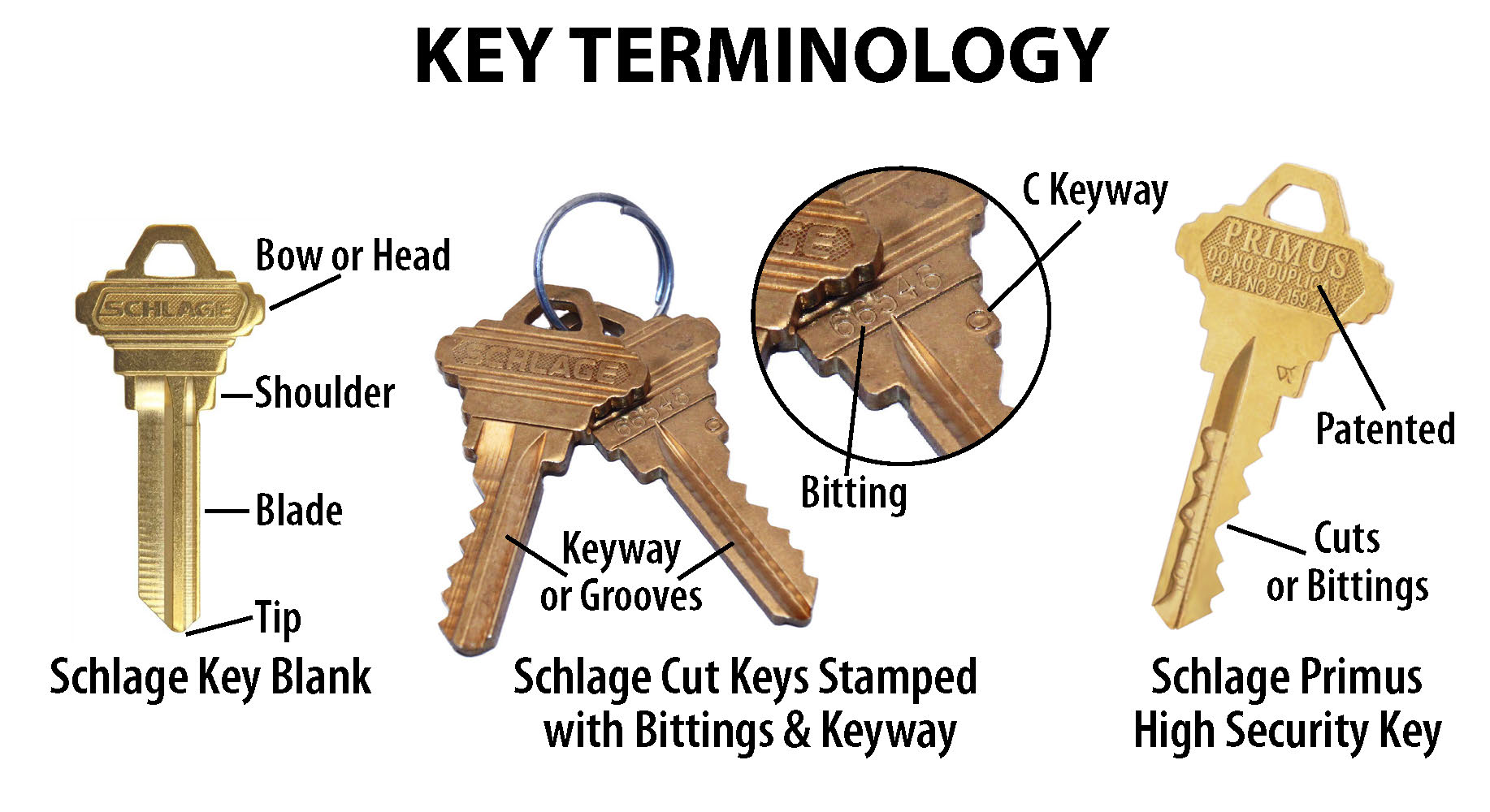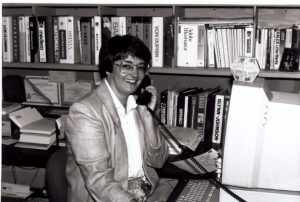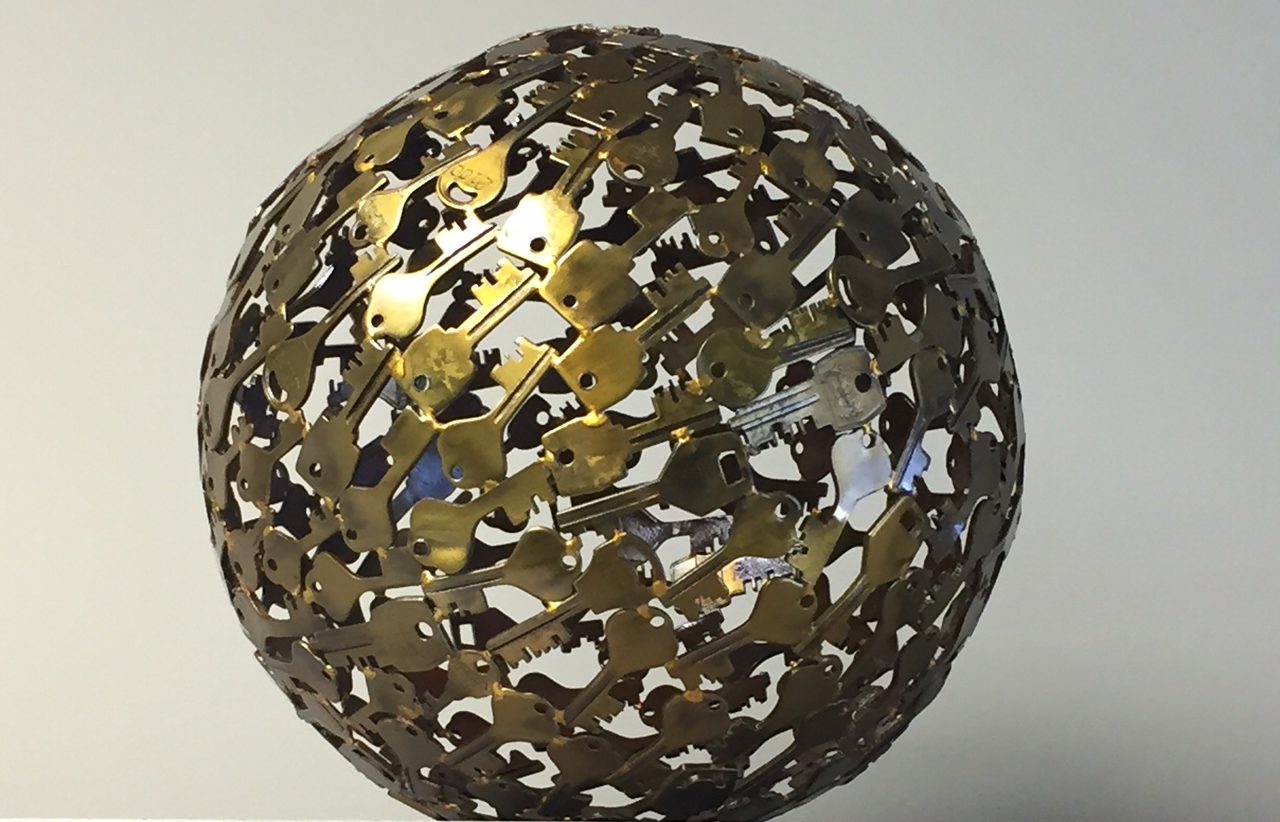I am a wordsmith
hired by a locksmith
after our dialogue
about his lock catalog.
I am a journalist. For four years I wrote a twice-weekly column about Kildeer, the community where the Anderson and Frelk families lived. In 1986, I interviewed Gene a week after the Des Plaines River overflowed its banks, flooding Anderson Lock.
Gene described the damage for my Daily Herald readers: “Slime. Sludge. Smell. Sandbags. Despair and exhaustion. Total devastation.” He also told me about how his employees’ teamwork saved his company. Gene liked my article, so a few years later, when his daughter, Cortney, and my daughter, Hilary, were heading to college and I was seeking a full-time job, he asked if I wanted to edit a catalog for him.
Thus, thirty-something years ago, Gene walked me to Anderson Lock’s front door, pointed to the top and said, “Kathi, that is a door closer. We sell and install door closers every day. You’ll need to learn about them for the catalog.”
Dozens of different door closers, hundreds of different kinds of locks, and a million key blanks filled shelves or hung on hooks in the showroom and warehouse. Gene selected top selling products from top name commercial brands to feature in his company’s third full-line catalog, and I found black and white line art to put with brief descriptions. I learned a lot about locks, keys, Master Key Systems and related security door hardware. I also, reluctantly, learned locksmith lingo.
Gene, “Kathi, it’s KA or KD ‘Keyed Alike’ or ‘Keyed Different’. It’s traditional locksmith terminology. We can’t change that in our catalog to ‘Keyed Differently’.”
Me, “OK…but it’s not grammatically correct.”
Anderson Lock catalogs, with defined acronyms, finish charts and door handing diagrams serve as a technical resource for our customers. For example:
KA = Keyed Alike One key opens multiple alike locks. In other words, if your front and back doors are Keyed Alike, you only need one key to open both doors.
KD = Keyed Different Locks are opened by their own unique, different key.
MKD = Master Keyed A Master Key opens all the locks in a Master Key System, although each lock also has its own unique key.
Gene also instructed me about other key words, like the “parts of a key.”
Me, “Parts? I thought a key was a single entity!”
Ah! Yes, but the parts of the key have names like bow, shoulder, blade and tip:
 Anderson Lock mailed black-and-white print catalogs to hospitals, universities and prisons across the country; to places that need heavy duty locks and door closers. Sales spiked.
Anderson Lock mailed black-and-white print catalogs to hospitals, universities and prisons across the country; to places that need heavy duty locks and door closers. Sales spiked.
“That’s just swell!” Gene said. “I’m going to find a new location, and you’re going to have your own office!”
 Good news for me because I didn’t even have a desk at the ‘old location.’ My classic Macintosh computer sat on a shelf next to Laura Miller’s desk.
Good news for me because I didn’t even have a desk at the ‘old location.’ My classic Macintosh computer sat on a shelf next to Laura Miller’s desk.
So, he bought the former Sirloin Stockade restaurant building down the street. By that time, I knew what Gene was talking about when he said a “keying station” would replace the salad bar. I learned a lot about key blanks when I was asked to create tags for hundreds of hooks behind the new showroom counters. One Saturday morning, I helped hang thousands of keys in the new location.
Two more catalogs were key drivers of growth. For each product, we only listed a few, essential features, extracted from manufacturer’s sell sheets. Only the basic, most popular functions and finishes were offered. Maintenance, janitorial and facility personnel referenced our catalogs for years, and often requested a second one as theirs was worn out!
In 1997, Cortney joined the family business. The next year Anderson Lock led the local locksmith industry when we launched the company’s first website.
That is when, for me, “key words” took on a whole new meaning. When spelled as one word, the term keyword is defined differently from when key word is used as two separate words. For example, in the context of search engines or websites, it typically means search term; that is, the thing you’re searching for. I write long lists of keywords for our website designers and for SearchLab, our search engine optimization (SEO) team.
I now know locksmith lingo, locksmith jargon, and locksmith terminology. I can create key charts, type key lists and key code sheets. I can identify key blanks and key tools.I love to blog about locksmith lore and share excerpts from locks in literature.
I spend hours every day typing on my keyboard, because:
I’m still a wordsmith
writing for a locksmith
but instead of print catalogs
I now write lock and key blogs.



